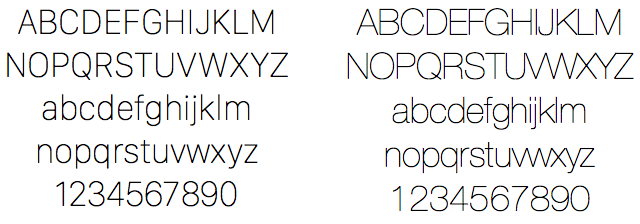

This design appears to use Helvetica or a close imitation. Ī 1969 poster by Robert Geisser exemplifying the "Swiss" style of the 1950s and 60s: solid red colour, simple images and neo-grotesque sans-serif type, all in lower case. A feature-length film directed by Gary Hustwit was released in 2007 to coincide with the 50th anniversary of the typeface's introduction in 1957.

Originally named Neue Haas Grotesk (New Haas Grotesque), it was rapidly licensed by Linotype and renamed Helvetica in 1960, which in Latin means "Swiss" (from Helvetia), capitalising on Switzerland's reputation as a centre of ultra-modern graphic design. Miedinger and Hoffmann set out to create a neutral typeface that had great clarity, no intrinsic meaning in its form, and could be used on a wide variety of signage.

Hoffmann was the president of the Haas Type Foundry, while Miedinger was a freelance graphic designer who had formerly worked as a Haas salesman and designer. Notable features of Helvetica as originally designed include a high x-height, the termination of strokes on horizontal or vertical lines and an unusually tight spacing between letters, which combine to give it a dense, solid appearance.ĭeveloped by the Haas'sche Schriftgiesserei ( Haas Type Foundry) of Münchenstein ( Basel), Switzerland, its release was planned to match a trend: a resurgence of interest in turn-of-the-century "grotesque" sans-serifs among European graphic designers, that also saw the release of Univers by Adrian Frutiger the same year. Over the years, a wide range of variants have been released in different weights, widths, and sizes, as well as matching designs for a range of non-Latin alphabets. Its use became a hallmark of the International Typographic Style that emerged from the work of Swiss designers in the 1950s and '60s, becoming one of the most popular typefaces of the mid-20th century. Helvetica is a neo-grotesque design, one influenced by the famous 19th century (1890s) typeface Akzidenz-Grotesk and other German and Swiss designs. Helvetica or Neue Haas Grotesk is a widely used sans-serif typeface developed in 1957 by Swiss typeface designer Max Miedinger and Eduard Hoffmann. The irony is by the time that happens, Helvetica Neue will be passé.1957 sans-serif typeface developed by Max Miedinger Helvetica Otherwise, please stick to regular weight fonts at a minimum.īelieve me, I’m looking forward to the day we all have Retina-grade screens and such fonts will be fine. If you’re basing your exploit-friendly CSS font imports on user-agent, by all means give Retina clients that XSS malware vector. If you’re relying on it entirely to make your text readable, you’ve doing it wrong. Subpixel rendering and antialising improve the appearance of many fonts.

This is why lightweight fonts were seldom used on computer displays before. Regular displays lack the resolution to render ultra-lightweight fonts with sufficient detail to be readable. Apple was able to employ these fonts on iOS 7 because every client using it (save for the first iPad mini) would have a Retina screen. Unfortunately for us, such efforts are hopelessly misguided. Every second site is now also employing Helvetica Neue Light and Ultra Light, presumably in an effort to ape iOS 7. Here in 2014, the Georgia font is out, and inscrutable meatstack icons (pardon “hamburger icons”), fonts as big as your head and full-height banner images are in. 2015 is less than two months away, so its time to clear out the drafts folder.


 0 kommentar(er)
0 kommentar(er)
